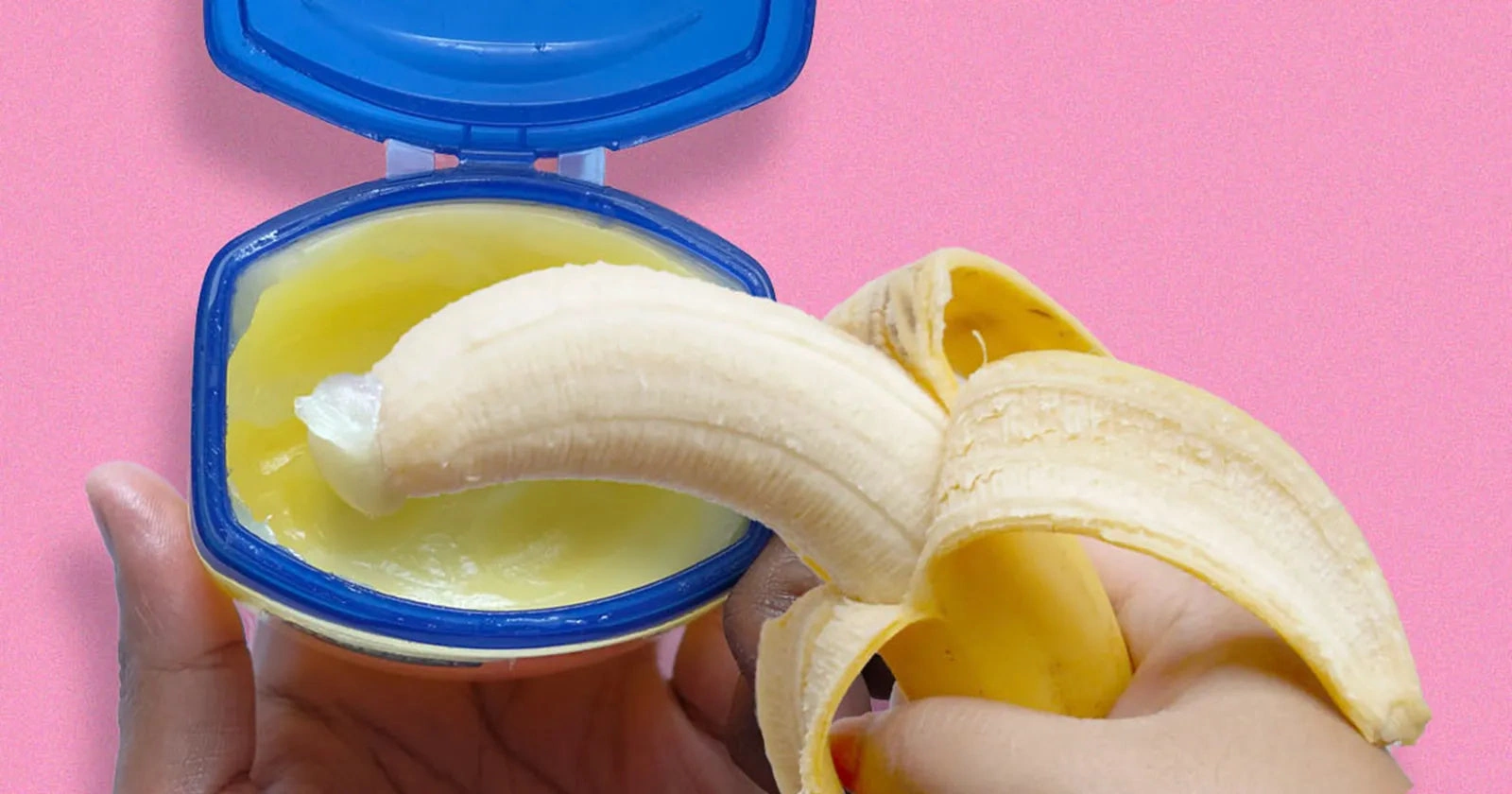
Tempting Shortcuts
Alright, I’m going to say what everyone’s thinking but nobody says out loud: Sometimes, when you’re in the bathroom—maybe tired, maybe a little desperate—you’ll consider whatever is in the cabinet. And yeah, that jar of Vaseline (petroleum jelly) has this way of looking like a solution. If you’re staring at it, thinking, “Can you use Vaseline as lube for suppository?” trust me… you’re not the first.
This isn’t some cold clinical explainer. This is health talk with a real-life lens. Because if you’re nervous or a bit embarrassed about suppositories, that’s real. But you deserve comfort, good info, and maybe even a little smile along the way.
Why Vaseline Feels Like the Answer
The Tried-and-True Myth
Let’s be honest, Vaseline fixes a lot. Dry elbows? Check. Squeaky door hinge? Why not. Diaper rash, windburn, chapped lips—it’s in every grandma’s toolbox. So, imagining it could help a suppository slide in a bit easier feels… almost obvious. It’s cheap and it doesn’t dry up. What could go wrong?
Well… this “fix anything” vibe is where a lot of us trip up. Back in college, my roommate—let’s just call her Em—used it for everything. One night she was dealing with bad constipation from stress (yay finals), grabbed a glycerin suppository, glopped on Vaseline, and went to town. For about ten minutes, it seemed to work. Then the irritation started. And…let’s just say her night didn’t get any easier. Turns out, not all slippery is created equal.
What the Research & Experts Say
| Lubricant Type | Does It Work? | Risks | Best For |
|---|---|---|---|
| Vaseline (petroleum jelly) | Slippery, but not ideal | Can block medicine absorption; can trap bacteria; hard to clean; may irritate sensitive tissue | External use (skin repairs, chapped lips) |
| Water-based lube (e.g., K-Y Jelly) | Slick, dissolves easily | Can dry quickly—just reapply if needed | Suppository insertion, sexual wellness, safe with meds |
| Plain water | Okay in a pinch | Not as smooth, but safe | If you’re out of everything else! |
Is Vaseline Safe for This? Let’s Get Real
Science Behind the Slick
If you peek at guides from hospital systems or pharmacist experts (yes, actual grownups who know this stuff), the overwhelming answer is: skip the Vaseline for suppositories. Here’s why:
- It’s oil-based. Sounds good on paper, but it can actually block the medicine in the suppository from melting and doing its job. Most suppositories—especially the ones for constipation or vaginal health—need body heat and moisture to dissolve. Petroleum jelly creates a barrier that can slow all that down. Not what you want when you’re hoping for fast relief. (Healthline, expert tips on rectal suppositories)
- It doesn’t mix with your body. It lingers, clings… and can trap stuff you realllly don’t want trapped (read: bacteria). According to research on vaginal and rectal health, any product that sticks around like this can increase your risk for irritation or even infection, especially if you’re using suppositories for sensitive issues. (Butler.org teaches safe suppository use)
And here’s the kicker: If you look at product labels, even Vaseline’s manufacturer says “external use only.” They never intended it to go inside your body, let alone as a medical aid.
Real Talk: Infection and Absorption Risks
I once helped my aunt after a surgery—part of her instructions involved a daily suppository. She told me, “I always used Vaseline for everything. Why not this?” The nurse, cool as ever, looked up and said: “Vaseline keeps moisture in skin but keeps medication out of places it needs to be. Try water-based stuff.” Amazing the difference that little detail makes.
What can happen if you do use it? Think: less absorption (so slower or even missed results), possible local irritation, and a playground for bacteria. Not fun, not fast, not what you want. If you want a deep dive into this awkward aftermath, timing issues, and more, definitely check out how long after suppository can I poop—there’s a lot more nuance than most people expect.
What Actually Works—and Feels Better
Good Lube Changes Everything
Here’s the less fancy—but truly valuable—insider advice. For ease, safety, and the best results, use a water-soluble lubricant (think K-Y Jelly, or similar brands, but there are generics too). They’re designed to dissolve where you want the action, don’t block absorption, rinse away easily, and don’t leave your nether regions feeling weird hours later according to pharmacy experts.
- No lube on hand? You can just wet the tip of the suppository or your gloved finger with cool, clean water. It’s not fancy but it works—especially in a pinch.
- Always avoid: lotions, oils, creams, weird home remedies—the less funky stuff you put near medications, the better.
Troubleshooting: Suppository Still Tough?
Sometimes, the little thing just won’t go in. Happens to everyone. Here’s what I learned after years helping in a family with chronic health stuff:
- If the suppository is super soft or melting, chill it in the fridge for 10–20 minutes first. (Just long enough to take the edge off. Don’t freeze it!)
- Make sure you’re laying in a position that helps. Pro tip: Lay on your left side. It’s not a gimmick! The left side places your rectum in a way that actually helps the medicine travel upwards instead of…well, downward. For more science-backed details, read Why lay on left side for suppository. It’s surprisingly useful.
These little steps take a job that feels awkward, maybe even a bit scary, and make it quicker and less stressful every time.
What Could Go Wrong? (And What to Watch For)
Side Effects and Red Flags
Let’s be real. Stuff happens. If, after using a suppository, you’re dealing with burning, itching, or pain that doesn’t calm down after a few hours—call your doctor or pharmacist. Same goes for rashes or any sort of allergic reaction. (Again, Vaseline is awesome outside, but inside? Not the same.)
What about timing? If you’re wondering about the logistics—like how long after suppository can I poop—you’ll find practical info that saves you from googling in a hurry next time around (because…let’s be honest, we’ve all been there).
Small Tweaks, Big Comfort
Little Stories, Honest Lessons
I used to joke that my family is “constipation royalty”—there’s always a bottle of Miralax somewhere around. That means we’ve become pro-level on what helps and what just makes things messier. The day my mom learned about water-based lube versus Vaseline (from, ironically, the world’s kindest pediatrician) was an actual game-changer for her chronic pain and regular suppository use. No mess, no pain, no need to wash bedsheets after.
So if you’re switching methods—maybe dropping the Vaseline habit after reading this—you’re not just following some random internet tip. You’re doing what pharmacists, GI nurses, and yeah, even exhausted adult kids caring for parents wish they’d known sooner.
A Quick “How-To” That Feels Human
- Wash your hands. Seriously, every “official” guide leads with this. It sets the mood and helps keep everything safe.
- Get comfy. Lay on your left side for suppository insertion if you’re able. Bring a magazine or podcast if you want to distract yourself.
- Prep the suppository. If it’s melty, give it a short cool-down in the fridge. If it’s hard enough already, move on.
- Moisten or lube. Use a pea-sized dab of water-based lube (or dampen with water if you’re out of options). Never Vaseline. Trust us—you’re saving yourself time and trouble.
- Insert gently. Pointed end first. About an inch is good for adults.
- Stay put. Try to hang out for 10–15 minutes to let the thing melt and do its magic. If you’re wriggling, sometimes it just pops out, which is… unfortunate.
Once it’s done, you’ll feel better. And if you’re figuring out your own rhythm (say, if you’re always wondering how long after a suppository you can poop), remember—it’s a learning curve, not a test. Share what works, skip what makes it harder.
When to Get Professional Backup
A Little Help Never Hurts
If you’ve got persistent pain, allergies, or you just can’t get things “moving,” reach out to your doctor. Don’t be shy—the folks in health care have seen and heard it all. And it can be super helpful having a quick chat, especially if you’re managing chronic conditions, sexual health changes, or anything that makes self-care a little more complicated.
Even within families, people respond differently—what worked for your cousin with Crohn’s might flop for you with hemorrhoids. That’s why it’s nice having official guides (and the occasional blogger friend) to make it less intimidating.
Wrapping Up: You, Me, and the Vaseline Jar
So, can you use Vaseline as lube for suppository? The honest answer is: please don’t. Vaseline is awesome for scrapes and lips, not for delicate places that need medicine to get where it’s going. Instead, trust water-based lubricants—they mix well, play nice with your body, and don’t create more problems than they solve.
If you’re switching it up for the first time, nice! Start with the next suppository you need. Or maybe you’ll save this advice for a future crisis (because let’s face it, adulting is full of those moments). If you’ve got questions—timing, technique, random awkward moments—click around, especially on super-practical resources like how long after suppository can I poop and why lay on left side for suppository.
Above all, remember: making your health routines work smoother isn’t about doing things perfectly—it’s about feeling comfortable, cared for, and a bit more in control. And if knowing what to do frees up your mind to laugh or take a nap instead of worrying about the Vaseline, well—that’s a win in my book.
Let me know what swap or tip you’re planning to try next time. Or share a funny or awkward story—because that’s how we all get better at this whole being-well thing, together.


















Leave a Reply
You must be logged in to post a comment.